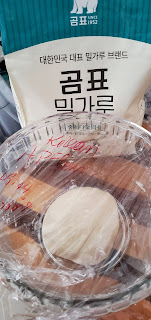I think the last time I made Flan was ... a very long time ago. I saw our team mates in the KENDO Zoom class reward themselves after the exercises with beautiful creamy flan. I thought I need to try making that. After all, I love flan. But not all Flan. I had flan at the restaurants. A few times at a very good restaurants. After I had it, I regret it. My lactose intolerance cause an havoc after a good meal. There is no better way to solve this than to make the Flan yourself at home with Lactose Free Milk. Problem Solved.
Get 5 3/4 C size Ramekins or 4 - 1 C size ready
Ingredients for Caramel:
6 Tbsp Sugar and 1/3 C water - heat in sauce pan until caramelized - golden - not brown.
Pouring equally into Ramekins right away. Coating the bottom of the Ramekins. Set Aside.
Custard: Be ready to Bain Marie to bake in oven at 320'F for 40-45 min.
1 large brownie pan or 9x11 cake mould to hold 5 Ramekins and hot water
Enough Boiling water to fill half way up the Ramekins.
In NutriBullet container, add 4 eggs + a pinch of salt + 1/2 C Sugar.
As you know NutriBullet beater container will be upside down with the beater head on the top when you close it. The sugar you added will be at the bottom. No worries. Just close it and shake the closed container back and forth for about 10 times.
Open the beater head. Add 1-1/2 C of low fat Lactose Free Milk + 1/2 C Heavy Cream.
Close the beater head.
Process for 4 to 5 sec only. We do not want to build up with foam.
Preheat Electric countertop convection oven to 325'F.
Pour the custard mixture equally into Ramekins.
Place the filled Ramekins into 9x11 cake mould pan or large brownie pan that would fit 4 Ramekins.
Add hot boiling water half way up the Ramekins.
Bake Bain Marie for 40 to 45 min or until the knife inserted comes out clean.
You can also enjoy this without caramelized sugar in the Ramekins.
Because I added Heavy Whip Cream, it foamed a bit even at 4-5 sec processing in the NutriBullet.The foamy top browned
But the inside is very creamy. No ugly bubbly holes inside. This one is without the caramel top.
I almost forgot to give the credit to the recipe idea to https://www.youtube.com/watch?v=tB55iAo3p2Y






































































